#fabric linen
Text
#silk fabrics#organic fabric#organic fabrics#ahimsa silk#cotton knit fabric#cotton fabric#painted fabric#muga silk saree#clothe store#fabric linen#organic corduroy fabric#natural dyed fabric#organic cotton fabrics#hemp cotton#muga silk fabric#muga fabric#silk khadi fabric#organic cotton fabric#banana fabric#hemp textiles#dyed fabrics#aloe vera fabric#hemp fabric#hemp fabrics#muga silk price#natural dyed#lotus fabrics#fabric hemp#hemp fabric textiles#handloom khadi fabric
0 notes
Text
#fabrics cotton#fabric linen#hemp fabric#cottony fabric#fabrics printed#organic fabrics#dyed fabric#fabrics cottonplain saree in silk#crepe fabrics#dyed fabrics
0 notes
Text

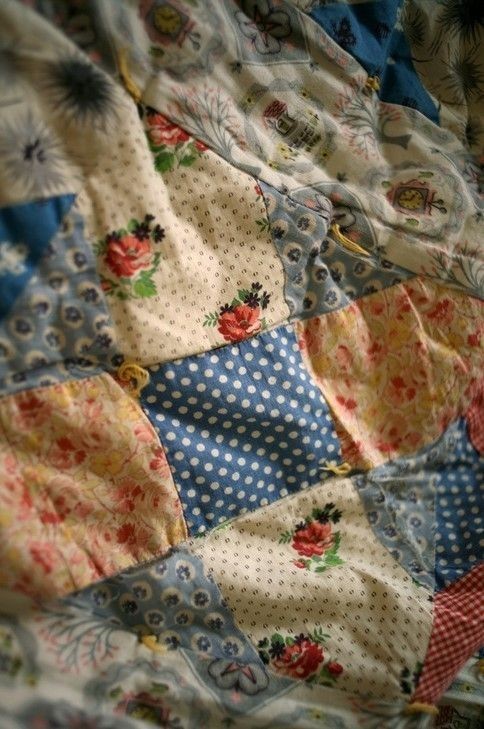
Cozy textures
6K notes
·
View notes
Photo

949 notes
·
View notes
Text
Fabric types and summer heat
The world is seeing record temperatures again. A lot of people find little comfort in their summer wardrobe these days, so it's important to be aware of how fabric types can influence your well-being in hot weather.
The following list of fabrics is by no means exhaustive, but it covers the basics.
Some of the fabrics mentioned below are expensive when bought new. You'll often find them for cheap in second-hand shops and on thrifting platforms though. I'm literally wearing a €5 linen underskirt, a €1 silk top, and a €7 silk summer dress right now, just to give an example.
General notes:
If you don't know where to start, try to stick to light-weight fabrics made of natural fibres. Look for light colours and open weaves.
You might be tempted to cover as little skin as possible in order to keep cool, but this leaves your skin vulnerable to sunburn. A thin layer of linen will often be more efficient at keeping you cool than leaving your skin bare.
Don't forget to wear sunscreen! Even if your skin type doesn't burn easily, it will still lower your chances of skin cancer. Look into sunscreens for children if you have sensory issues: they tend to be more sensory-friendly.

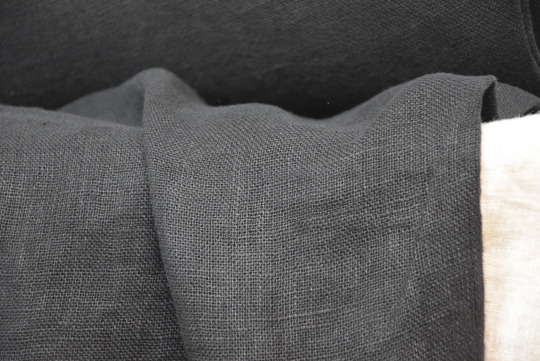
(Image source 1) [ID 1: a gray linen fabric with a tight weave.] / (Image source 2) [ID 2: a gray linen fabric with a loose weave.]
Polyester (to avoid):
Are your summer clothes making you ridiculously sweaty? Check the tag: you're probably wearing polyester.
Polyester is a synthetic fabric derived from petroleum: it's basically a plastic. It's strong, cheap, and stain resistant, which makes it a popular fabric. Even though a lot of summer clothes are made out of polyester, it's one of the worst fabrics to wear in summer.
Polyester is neither absorbent nor breathable, and captures heat. It traps sweat between your skin and your clothes, and it won't let you cool down. This leaves you feeling sticky and overheated. It can also cause static cling, which can be uncomfortable.
Not all synthetic fabrics are bad in summer: a lot of UV-blocking clothes are made of synthetics for example and can be a real life saver if you're sensitive to the sun. Try to avoid polyester if you can, though.
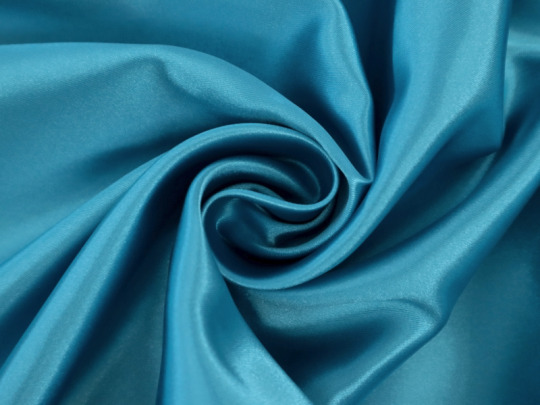
(Image source) [ID: close-up on a blue tightly woven polyester fabric that folds into a swirl at its centre.]
Cotton:
Cotton is a natural fibre that makes for a soft, durable, and breathable fabric. It allows air to circulate around your body which helps to keep you cool and get rid of sweat. It's a good basic choice.
Cotton has one downside: it's very absorbent, but takes a while to dry. If the weather's making you sweat excessively, the sweat can pool into the fabric of your cotton clothes. This will make them wet, resulting in visible sweat stains that can feel uncomfortable and will take a long time to dry.
If you can't stand how cotton feels, check out chambray weaves or bamboo textiles. They have similar properties to plain-weave cotton, but tend to be more sensory-friendly.
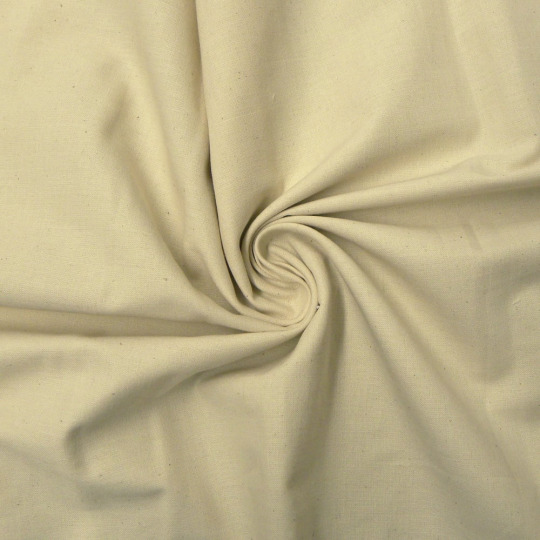
(Image source) [ID: close-up on a faded yellow tightly woven cotton fabric that folds into a swirl at its centre.]
Linen:
Linen is the absolute king of hot weather fabrics. It's strong, absorbent, dries quickly, and is very breathable. It cools you down, but won't make you feel sticky because any sweat it absorbs will evaporate fast.
I frequently layer multiple thin loose-fitting linen garments when it's hot. Loose layers allow for air to circulate between your clothes while protecting your skin from the sun. It almost functions as a wearable air-conditioner.
Note that linen is prone to wrinkling. If this bothers you, know that linen requires extra effort during laundry to avoid this.
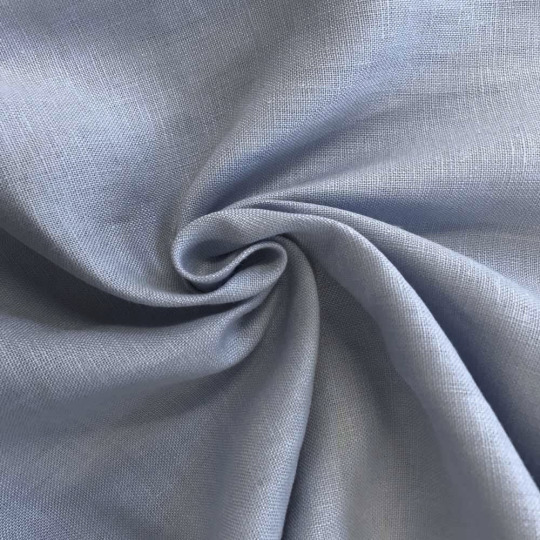
(Image source) [ID: close-up on a gray woven linen fabric that folds into a swirl at its centre.]
Silk:
Silk is yet another natural fibre that makes for a strong, quick-drying, and pretty breathable fabric. It's soft and cool to the touch, which makes it a great sensory choice.
Silk is not as breathable as cotton or linen, but dries very quickly. This means it might make you sweat more than cotton or linen does, but once the fabric's moist it will dry faster.
Note that sweat stains on silk tend to be pretty visible. Silk's also prone to static cling.
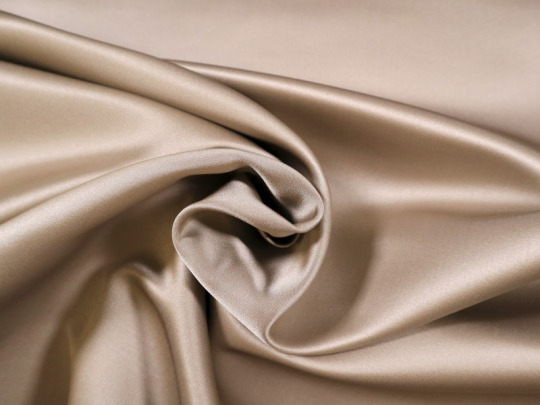
(Image source) [ID: close-up on a light brown tightly woven silk fabric that folds into a swirl at its centre.]
#wasteless crafts#fabric#summer#hot weather#sweat#fibres#silk#linen#polyester#cotton#chambray#bamboo#fabric types#fabric properties#clothes#fashion#keeping cool#heat waves#sunscreen#weather#thrifting#second hand shopping#fast fashion#slow fashion#sustainable fashion#uv blocking fabrics#tw cancer mention#tw skin cancer
2K notes
·
View notes
Photo

~ Drape ~
202 notes
·
View notes
Text
Me: Hey, I finished that dress I've been planning to make since last May.
My mother, silently grateful my first summer dress of the year is not covered in manic cartoon animals: Oh that looks lovely... Though don't you think you put a bit much fabric into your skirt? You could have used half and had enough left for a second dress.
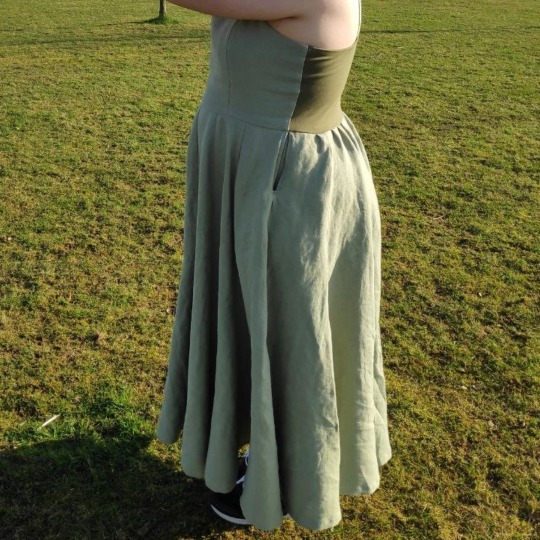
Me: It's more comfortable this way. Not as clingy. And it's cut to be low waste, so you get a lot of bang for your buck.
Mom: ... How much is in there?
Me: Only like 4 meters.
Mom: Of a low waste pattern.
Me: Yup.
Mom: Give me one reason you need that much "bang for your buck".
Me:
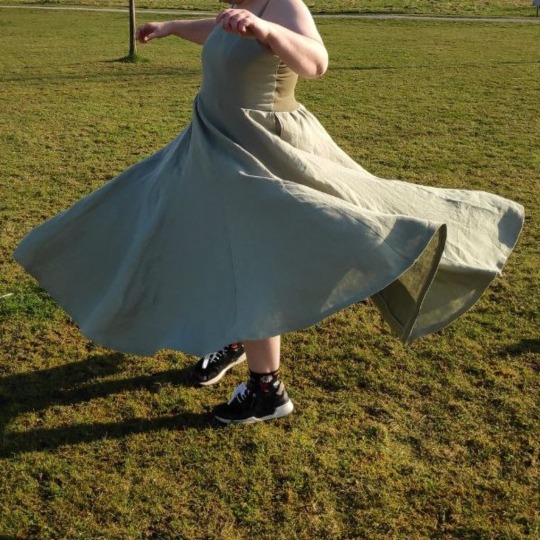

#sewing#skirt is Salix by Unendlich Schön#lengthened by a full 30 cm#because yolo#bodice is from the Riviera dress by Lotte & Ludwig#straight neckline and no fake button placket#fabric is Aina from IKEA#and a lil square of jersey in the back#you're supposed to not wash the linen on normal#and don't put it in the dryer#whoops#it's now soft as a cloud#skirt go spinny#I might need to get more of this fabric#also 10/10 would recommend just straight up replacing a back panel with jersey instead of putting in a zipper#you do have to gather (part of) your skirt onto elastic but that's still more idiot proof to sew or wear than an elastic#and yes#there's pockets#smaller than intended#but still plenty big for my phone and wallet#i then showed my creation to a sewing friend who loves skirts that are knee length or higher#she said she would immediately wear that dress if it were half as long#GOOD NEWS#it's supposed to be#and you can even make it a patchwork pattern#we're not gonna talk about how long this took to hem#pictures taken outside because it was the first warm day of the year#and also because I can't spin it safely while indoors#i could remake it in manic cartoon but it would cost at least twice as much
58 notes
·
View notes
Text

𝐍𝐞𝐰 𝐝𝐞𝐬𝐢𝐠𝐧 𝐢𝐬 𝐨𝐮𝐭! (𝐁𝐲 𝐒𝐜𝐡𝐨𝐨𝐥𝐡𝐨𝐮𝐬𝐞 𝐋𝐢𝐯𝐢𝐧𝐠)
𝗁𝗍𝗍𝗉s://instagram.com/schoolhouse
94 notes
·
View notes
Text

Source: tidningenlantliv
ℍ𝐚𝓵l נ𝐀 𝔳คĻǤẸ
72 notes
·
View notes
Photo

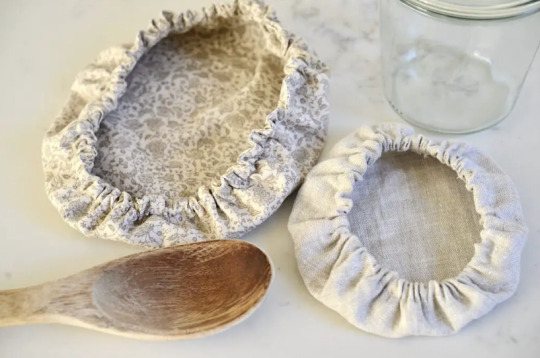

DIY Reusable Bowl Covers
Reusable bowl covers are very easy to sew and you can make them exactly fit all those bowls and jars you use the most.
✖✖✖✖✖✖✖✖
sew-much-to-do: a visual collection of sewing tutorials/patterns, knitting, diy, crafts, recipes, etc.
#DIY#sew#sewing#tutorial#how to#craft#reusable#bowl cover#kitchen#gift#green#sustainable#fabric#cloth#linen#jar
246 notes
·
View notes
Text
https://www.etsy.com/listing/1193010257/block-print-sew-on-patch-support-your

The new patches are in my shop.
#mothman#support your local harbinger of doom#cryptid culture#punk patch#block printing#cryptozoology#reclaimed linen#recycled fabric
79 notes
·
View notes
Text
#Sustainable Fabric#fabric linen#muga silk saree#organic fabric#clothe store#dyed fabrics#silk khadi fabric#cotton knit fabric#ahimsa silk#Fabric sample#painted fabric#silk fabrics#organic fabrics#cotton fabric#linen fabric#cottony fabric#fabric#fabrics#online fabrics#satin fabrics#WOOL FABRIC#silk sarees#fabrics linen
0 notes
Text
Natural Dye | The Way Far Away from the Chemical Route
Natural dye is the change needed by us, to create an environment that is not exposed to chemicals created by the fashion industry.
Dyes, the shades used from centuries to date for imparting colors to the fabrics are formed in two ways, one is through nature and the other through chemicals; that is the natural and chemical dyes.
Natural dye is a way of giving back to the nature that it beautifully possesses and chemical dye at the same time is causing harm to the environment.
It’s known that the synthetic dye contains 72 chemicals individually, from which 30 cannot be removed, some of these chemicals are mercury, lead, chromium, copper, sodium chloride, and benzene, as explained by ‘SCIRP’ in https://www.scirp.org/Html/4-8301582_17027.htm
This dye restricts the toxin release from the body; the release is the most crucial step taken every day by our body to keep it healthy.
We are exposed to more chemicals with the increase in growth of the fashion industry and the shoppers, products created through the chemical process are causing more harm to the only habitable planet and the living creatures in it.
During this chemical process, a large amount of color does not bind to the fabric, hence releasing approximately 10-15% of coloured water into the environment. One of the major examples of this situation is the 2011 case that happened in North China when the Jian River turned red due to the dyes dumped from the local chemical plant.
As explained in the article by Trusted Clothes named ‘Impact of Dyes’.
Natural dye when created does not extract any harmful emissions to the environment, it reflects the essence of nature in our clothing without causing it any harm.
Featured by ‘International Business Times: China’s River of Blood
Due to the non-chemical ingredients used, natural dyeing helps the makers to be in good working conditions, without letting them be exposed to any harmful atmosphere. It doesn’t just limit to the makers but also to the wearers and buyers because along with quality enchantment, the natural dyes also contain medicinal properties, to protect us from various causes.
Naturally dyed products possess a great deed as it easily biodegrades after their life-cycle, unlike chemical dyes that don’t just fill the landfills with unwanted and harmful chemicals but at the same time also make it more difficult to destroy them.
Natural dye is a step towards more sustainable development, a practice that should be practiced by many.
We at Pahartah stand for naturally dyed products, which craft every step towards sustainable living.

#fabrics cotton#hemp fabric#crepe fabrics#dyed fabric#cottony fabric#fabric linen#fabrics printed#dyed fabrics#fabrics cottonplain saree in silk#organic fabrics
0 notes
Text
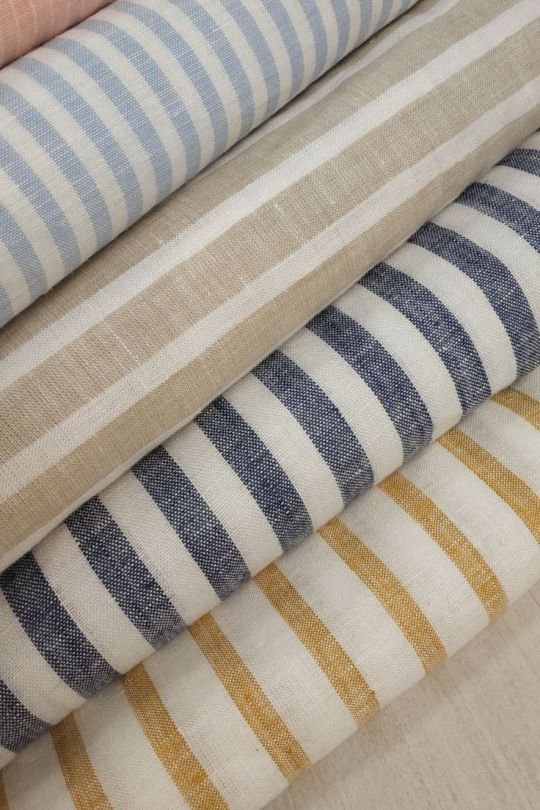
Suw mood.
#fabric#fabrics#fabric inspo#fabric inspiration#pattern#patterns#menswear#mens wear#linen#menstyle#menstyle blog#suwstudios#suw studios
45 notes
·
View notes
Text
Ok so, myself & housemates are gonna host have a pirate/ocean themed Halloween party right? And I’m like oh I kinda wanna do a Will Turner cosplay for the hell of it, and also especially because his red shirt from At Worlds End is so deliciously gorgeous.

It can’t be that hard to make, right?
#besties help I really can’t afford more fabric#but also if I’m doing this I’m making it out of linen no one can stop me#also to my IRL’s: invites should go out in a few days so stay tuned#pirates of the caribbean#will Turner#merry words indeed
79 notes
·
View notes
Text
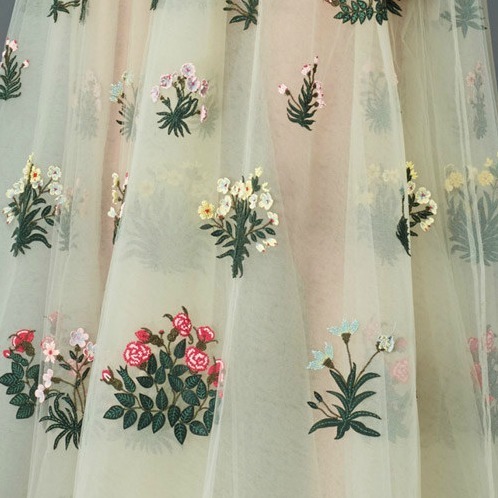
Valentino pre-fall 2015
#fabric#home decor#flowers#floral#linen curtains#curtains and blinds#decor inspo#decoration#interiors#interior design#home#lifestyle#indie#art#art design#fashion#valentino#designer#boop
23 notes
·
View notes